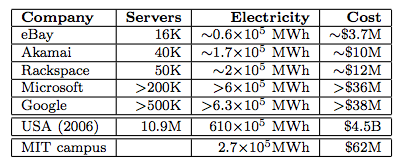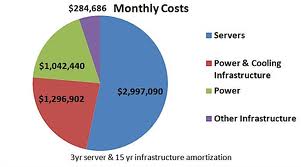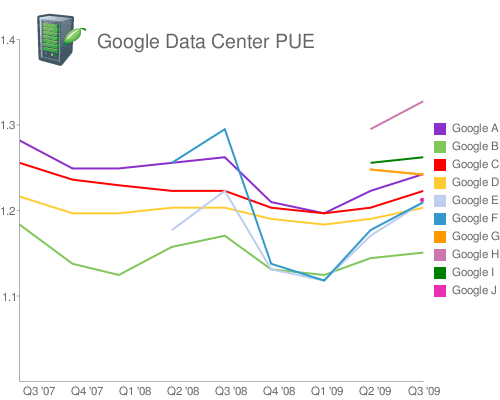Industry
Data Center Energy Costs and Usage
By Robb Miller
| Reading time 2 minutes
Facebook users share over 25 billion pieces of content, and view 500 billion pages, every month. (One of Facebook’s clusters has over 2250 machines and 23,000 cores, compressing 80-90 TB of data every day). Similarly, Linkedin crunches over 120 billion relationships per day. Do you ever wonder how much the electricity is costing?
How much do they use?
The largest internet companies operate hundreds of thousands of servers that consume many megawatts of electricity, as much as tens of thousands of US homes. The numbers are staggering, and growing fast. (A recent report from Greenpeace entitled “How dirty is your data” ranks big data companies by energy source.)
How much do they pay?
Power consumption is the number one cost in a modern mega-data center. Some estimates suggest that power costs account for between 30 and 50 percent of the functional operating costs for most data centers. Performance-per-watt metrics are all the rage with big cloud players. Companies like Facebook, Linkedin, Google and Amazon are taking aggressive and experimental steps in their quest to lower power consumption.
Organizations such as Facebook, Linkedin, Google, Microsoft, Amazon, Yahoo and Rackspace cannot ignore their energy costs. One estimate of annual electricity costs of some of the larger players is below:


While we recognize that data center operators are also managing the non-IT energy costs, (ie. cooling, lighting, power-delivery and back-up), the ‘working’ IT power load could easily be shifted real-time to lower-cost jurisdictions, provided your routing algorithm has access to transparent electricity pricing information.
As the big data behemoths become truly interested in data center compute efficiency, we believe that the underlying metric will begin to evolve from performance-per-watt to include a price-per-kWh into the mix.

Strategies for reducing costs
Electricity prices can vary significantly between two different locations, due to demand differences, transmission efficiencies and generation diversity.
Siting considerations
Small differences in price across country and state lines can drive efficiencies, and data investment dollars. (One study suggests that we can reduce energy costs by up to 30% without a significant difference in client-server distances.)
Traffic Routing considerations
Is there any way to exploit temporal and geographic fluctuations in electricity pricing for economic benefit? Consider the following electricity pricing variation table (for illustrative purposes only, based on 2009 next-day data):
[
Some real arbitrage possibilities exist for a pricing-intelligent routing algorithm. One study suggests that we can reduce energy cost by up to 30 percent, without a significant difference in client-server distances. We encourage use of our comprehensive tariff database to achieve these economic and environmental efficiencies.
Also in Industry
Home Energy Devices and Applications
By Robb Miller | Apr 15, 2011
Solar and Time of Use Tariffs
By Robb Miller | Apr 12, 2011
San Francisco passes Zero Fuel, Zero Emission transportation act
By Emile Baizel | Apr 1, 2011
Controling Vampire Power to Save on Electricity Bills
By Robb Miller | Feb 27, 2011

